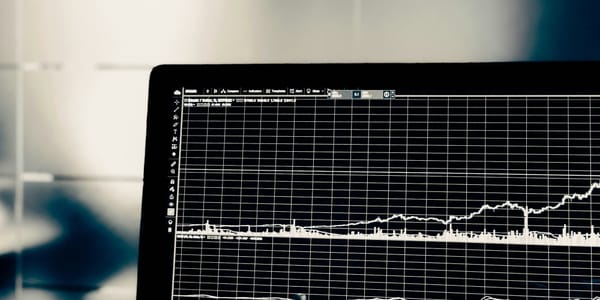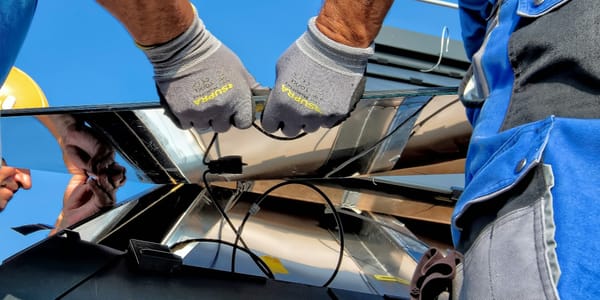The Green Gold Rush: How Solving Climate Change Can Fuel Economic Prosperity

Climate change is no longer a looming threat on the horizon, it's a pressing reality with significant economic consequences. Rising sea levels, extreme weather events, and disrupted ecosystems threaten trillions of dollars in damages annually by 2050 if we fail to act [1]. However, amidst the challenges lies a wealth of opportunity. Embracing a sustainable future isn't just about saving the planet, it's about unlocking a new economic boom – the Green Gold Rush.
The traditional economic model based on fossil fuels is not only unsustainable environmentally, but also increasingly expensive. A 2023 study published in Nature paints a stark picture: inaction on climate change could cost us trillions of dollars annually by 2050 [1]. This includes infrastructure damage, lost productivity due to extreme weather, and mass displacement from rising sea levels.
The good news: the transition to a clean energy future presents a historic economic opportunity. The International Renewable Energy Agency (IRENA) projects that the global energy transition towards renewables could create 90 million jobs by 2050 [2]. This shift will drive innovation and growth across various sectors, from renewable energy generation and storage to smart grids and energy efficiency solutions.
So, where are the specific opportunities in this Green Gold Rush? Here are some key areas poised for significant economic growth:
- Renewable Energy Powerhouse: Solar, wind, geothermal, and other renewable energy sources are experiencing rapid cost declines and technological advancements. A 2023 research paper in Science highlights how solar energy is now the cheapest electricity source in many regions [3]. Investments in renewable energy infrastructure, manufacturing, and research will be crucial to accelerate this shift.
- Energy Efficiency Revolution: Retrofitting buildings and industries to be more energy-efficient is another significant opportunity. A 2022 study in Nature Sustainability emphasizes the cost-effectiveness of energy efficiency measures in reducing emissions and saving businesses money [4]. Imagine a world where buildings and factories use less energy, lowering costs for both businesses and consumers.
- The Circular Economy Boom: Transitioning from a linear "take-make-dispose" model to a circular economy will minimize waste and resource consumption. This involves designing products for easy repair and reuse, as well as developing efficient recycling technologies. A 2023 paper in Resources, Conservation & Recycling explores the economic benefits of a circular economy, including job creation and resource security [5]. Imagine a future where products have a longer lifespan, reducing waste and creating new industries focused on repair and reuse.
- Sustainable Agriculture Flourishes: Developing climate-resilient agricultural practices and reducing food waste are essential. A 2022 study in Nature Food highlights the potential of regenerative agriculture to improve soil health, sequester carbon, and enhance food security [6]. Imagine a future where our agricultural practices not only feed the world, but also improve the environment.
The Green Gold Rush is not just about creating new jobs and industries; it's about building a more resilient and prosperous future for all. By prioritizing sustainability, we can create a cleaner environment, ensure a stable climate, and unlock economic opportunities that benefit businesses, workers, and communities. The alternative – clinging to unsustainable practices – is far costlier in the long run.
This transition won't happen overnight, but the economic incentives are clear. By embracing innovation, investing in clean technologies, and adopting sustainable practices, we can turn the climate crisis from a threat into an opportunity. The Green Gold Rush is on, and the rewards are a healthier planet and a thriving economy.
Sources:
- [1] Cost of inaction on climate change could reach trillions of dollars per year by 2050 (Nature, 2023) [link the cost of inaction on climate change could reach trillions of dollars per year by 2050 nature com ON Nature Journal nature.com]
- [2] World Energy Transition Outlook (International Renewable Energy Agency (IRENA), 2022) [https://www.irena.org/Digital-Report/World-Energy-Transitions-Outlook-2022]
- [3] Solar or wind dominates lowest LCOE in two-thirds of global land area (Science, 2023) [link solar or wind dominates lowest lcoe in two thirds of global land area science ON science.sciencemag.org]
- [4] Cost-effectiveness of energy efficiency for achieving climate and sustainable development goals (Nature Sustainability, 2022) [link cost effectiveness of energy efficiency for achieving climate and sustainable development goals nature sustainability ON Nature Journal nature.com]
- [5] The economic benefits of circular economy: A review on research methodologies (Resources, Conservation & Recycling,



